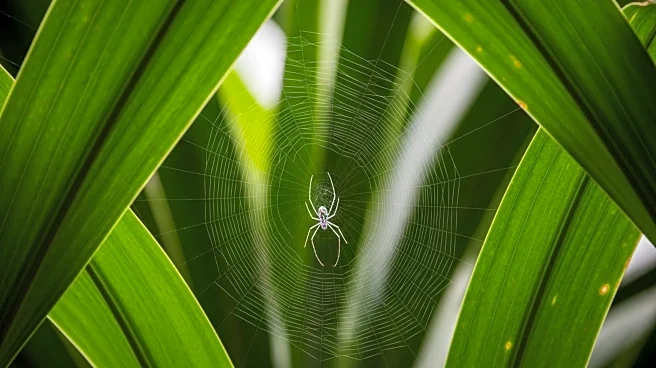What's Happening?
Researchers at Chulalongkorn University Museum of Natural History have identified a new species of spider in western Thailand, near Nong Rong, Phanom Thuan, Kanchanaburi. The spiders belong to the genus Damarchus, known for their wishbone-shaped burrows. The discovery includes a rare gynandromorph specimen, which exhibits characteristics of both male and female spiders, split down the middle. This is the first report of a gynandromorph in the Bemmeridae family, with only two previous cases in mygalomorph spiders. The male spiders are gray and covered in an unidentified white substance, while females are bright orange. The species is named after Inazuma, a character from the Japanese manga 'One Piece,' reflecting the bilateral asymmetry observed in the spiders.
Why It's Important?
The discovery of a new spider species, particularly one with gynandromorph characteristics, is significant for biological research and biodiversity studies. Gynandromorphs are rare and provide unique insights into genetic and developmental processes. This finding could lead to further research on chromosomal disorders and natural factors influencing gynandromorphism. The study enhances understanding of the diversity within the Bemmeridae family and contributes to the broader knowledge of arachnid biology. Such discoveries can impact ecological studies and conservation efforts, highlighting the importance of preserving natural habitats.
What's Next?
Further research is needed to confirm the molecular data and fully understand the genetic makeup of the new species. Scientists may explore the causes of gynandromorphism, potentially investigating environmental factors like nematode infections. The discovery may prompt additional studies on the ecological roles of these spiders and their interactions within their habitats. Conservationists might focus on protecting the forested areas in Thailand to preserve the newly discovered species and their unique genetic traits.
Beyond the Headlines
The discovery raises questions about the ethical implications of genetic research and the potential for manipulating genetic traits in other species. It also highlights the cultural significance of naming species after popular media characters, reflecting the intersection of science and culture. Long-term, this could influence public interest in biodiversity and conservation efforts, encouraging more support for scientific research.











